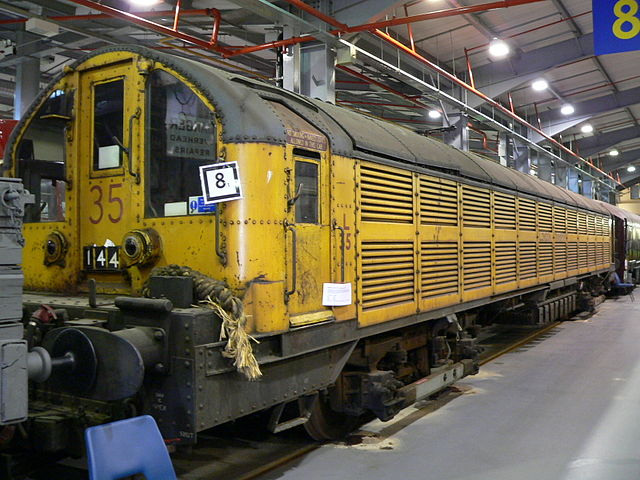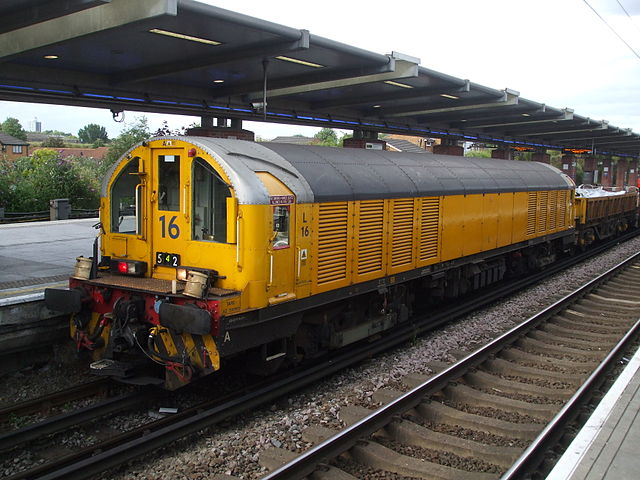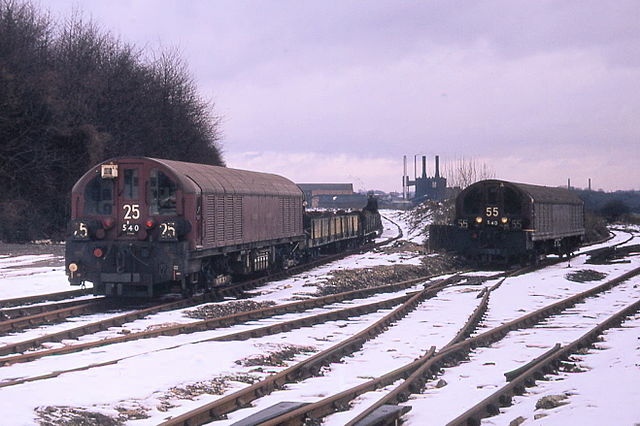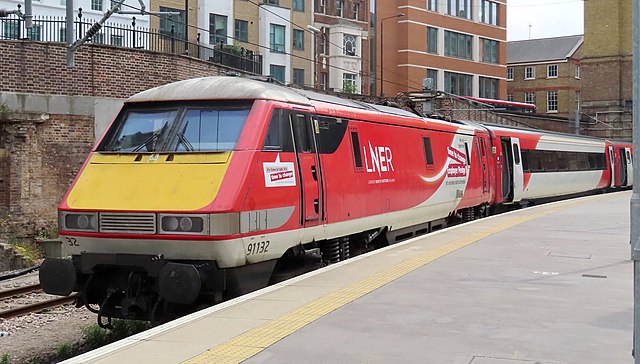London Underground battery-electric locomotives
London Underground battery-electric locomotives are battery locomotives used for hauling engineers' trains on the London Underground network where they can operate when the electric traction current is switched off. The first two locomotives were built in 1905 for the construction of the Great Northern, Piccadilly and Brompton Railway, and their success prompted the District Railway to buy two more in 1909, which were the only ones built to the loading gauge of the subsurface lines. Following this, a number of battery vehicles were built by converting redundant motor cars, with the batteries placed in the unused passenger compartment. One exception to this was made by the City and South London Railway, who used a trailer car to hold the batteries, and wired them to a separate locomotive.
Preserved L35 at the London Transport Museum in November 2005
A battery-electric locomotive at Euston station, April 2006
Locomotive L16 seen at West Ham station (District line platforms).
LT battery-electric locomotives at Croxley Tip, 1971
An electric locomotive is a locomotive powered by electricity from overhead lines, a third rail or on-board energy storage such as a battery or a supercapacitor. Locomotives with on-board fuelled prime movers, such as diesel engines or gas turbines, are classed as diesel-electric or gas turbine-electric and not as electric locomotives, because the electric generator/motor combination serves only as a power transmission system.
Electric locomotive Škoda ChS4-109. The Moscow–Odesa train in Vinnytsia railway station.
The ČSD Class E 499.3
The Siemens ES64U4 is the current confirmed holder as the fastest electric locomotive at 357 km/h (222 mph) in 2006.
A British Rail Class 91 at London King's Cross station.








